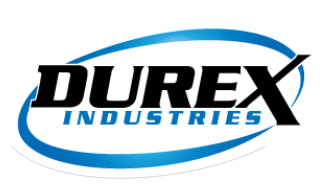Electric Heat Sources Find Use in the Oil and Gas SectorElectric immersion and circulation process heaters are used in a variety of applications in industrial manufacturing and processing industries such as the oil and gas sector. The oil and gas sector has been growing due to commercial development of oil sands as well as the rapid growth of hydraulic fracturing (fracking). As exploration and extraction at new sites continue, efforts are often made to keep existing wells viable through cost reductions and operational improvements. Many of these wells use oil/water separators or treaters in an effort to separate oil and water components from the other fluids. The majority of these separators are fuel-fired units. However, one potential option to reduce local exhaust emissions and increase uptime — crucial elements for this industry — is to switch from fuel-fired to electric heat sources in smaller-sized units. This article explores some considerations for this.There are essentially two methods of electric heating that can be employed – direct immersion and indirect immersion. A direct immersion heater, as the name implies, has the heater elements directly immersed in the liquid, which means that virtually all the heat energy generated goes into the fluid. Indirect immersion heaters (also known as dry well or pipe insert heaters) have the heater elements inserted into a closed end pipe, isolating the heater from the liquid being heated. Heat transfer takes place via conduction, convection and radiation from the heater elements to the dry well/pipe wall and then is conducted to the liquid. In either case, the operator will have to retrofit the separator by removing the fire tube and installing appropriate mounting flanges into the unit. 

An estimate needs to be made for the heater power rating. A rule of thumb for direct immersion heating is that an electric heater needs to have a power rating only one-half to one-third as high as a burner system. Unlike fuel-fired systems, in this type of arrangement, virtually all of the heat energy generated is absorbed by the liquid being heated. For example, a 400,000 BTU burner would be generally replaced by a 130,000 to 200,000 BTU (40 to 60 kW) immersion heater. If efficiency data is available, this helps to further dial in the appropriate kilowatt rating. When approaching a potential conversion to electric immersion heaters, it is crucial to get accurate information on the exact nature of the oil/emulsion/water solution to be heated. Applications with “sweet oil” and “sweet water” are more appropriate for direct immersion heating than “sour” and saltwater applications. If possible, review separator well chemical data over time to determine to what extent potentially aggressive substances may be part of the liquid. When this data is not specifically known, a field trial will indicate the suitability of materials. 
This type of failure is typically associated with nuclear (film) boiling at the sheath, which means a steam vapor pocket forms and causes localized overheating and shorting to the sheath. But it also indicates a breach of the sheath by 
As mentioned earlier, indirect immersion or dry well heaters are often a solution for the heating of aggressive liquids. The flange heater/well assembly essentially forms a convective/radiant type of oven that pushes heat energy into the well pipe and out into the separator liquids. Oil separators and treaters for use in sour service are coated with a lining to prevent chemical attack of the underlying steel structure. In these applications, a dry well type of replacement heater would be recommended. Retrofit from a burner tube to a pipe dry well, however, would also require the new installation to be coated with the same type of liner. The heater power sizing would be similar to that of direct immersion heating. Dry well immersion heaters are typically very low power (watt density) heater elements in the 6 to 10 W/in2 of surface range in order to ensure a longer operating life. It is always recommended to use alloy 840 or 800 materials for the heater elements in dry well heaters to prevent premature oxidation of the heater sheath. Steel or even stainless steel, however, can also be used as a lower cost option if heating low viscosity, inorganic liquids such as water at fairly low process temperatures. 
Because separators and treaters are settling out and separating liquids, turbulence is not commonly found in these units. This lack of turbulence can lead to coking, sludge buildup and mineral deposits on the well. These deposits thermally insulate the dry well and slow heat transfer to the liquid. As time goes on, the heating chamber must continue to increase in temperature in order to "push" the heat through the insulation and into the liquid. This can result in the dry well overheating and damaging the protective lining on the wet side, enabling chemical attack of the base metal. This can also result in overheating of the heater elements and premature heater failure due to sheath or resistance wire oxidation. In applications where buildup is common or expected, operators need to work with the separator manufacturer to determine solutions to prevent the conditions (if possible) that may lead to the buildup. From the heater side, using the proper sheath material, conservative power ratings and high limit control features will ensure that the heater performs properly. Direct immersion and indirect immersion heaters are a potential alternative heat source for small fuel-fired separators. They have zero local emissions and are easy to control, which in the right circumstances can be an attractive option. However, it is crucial to get complete application information, including liquid chemical makeup, operating temperatures and details on previous operating experience with the fuel-fired application. This will go a long way toward ensuring the proper heater configuration and successful application of electric heating. |


